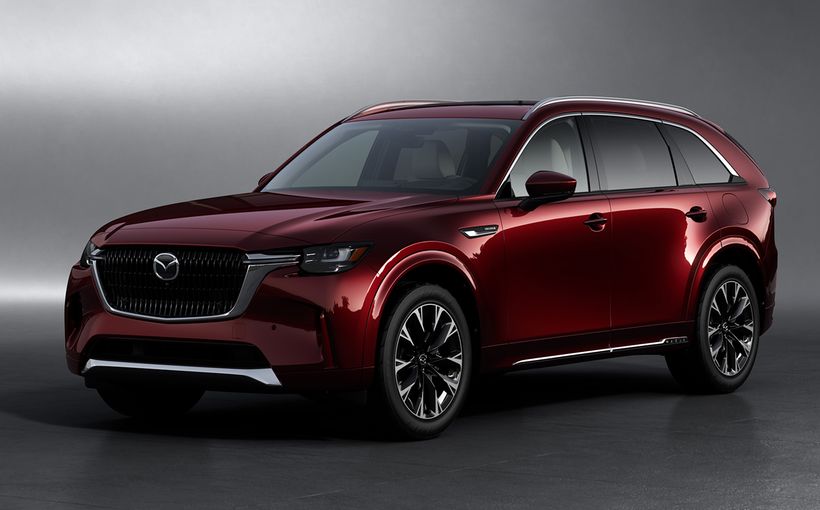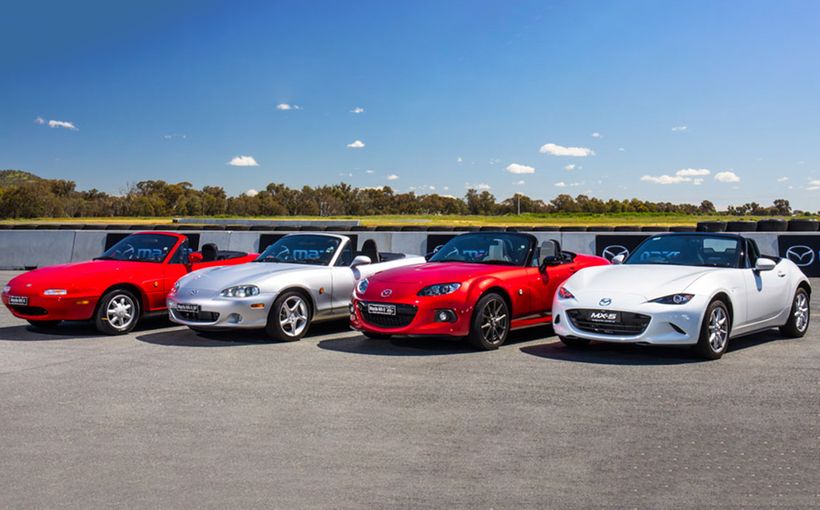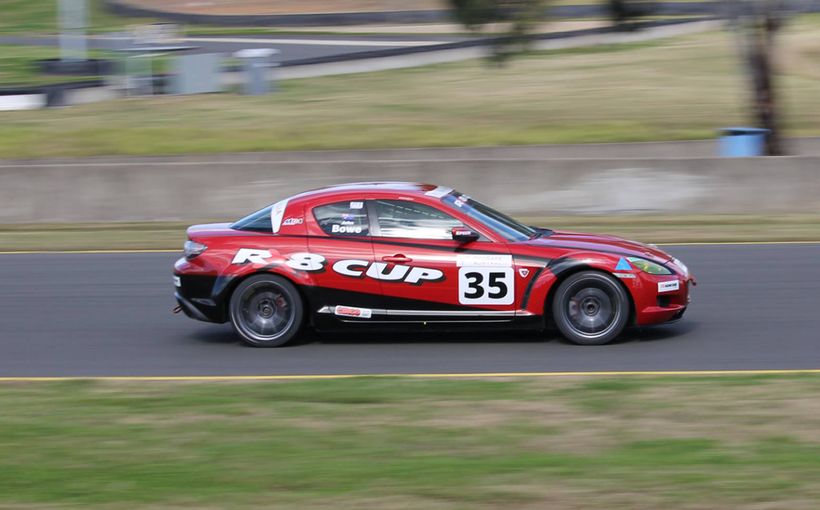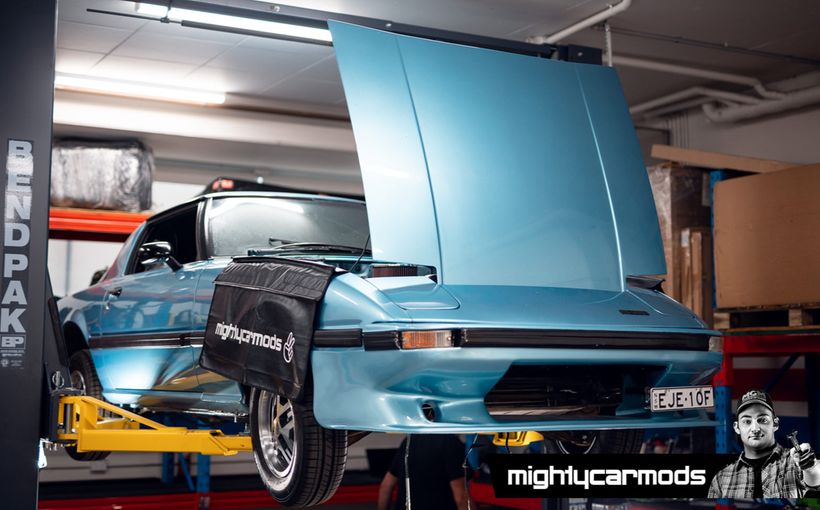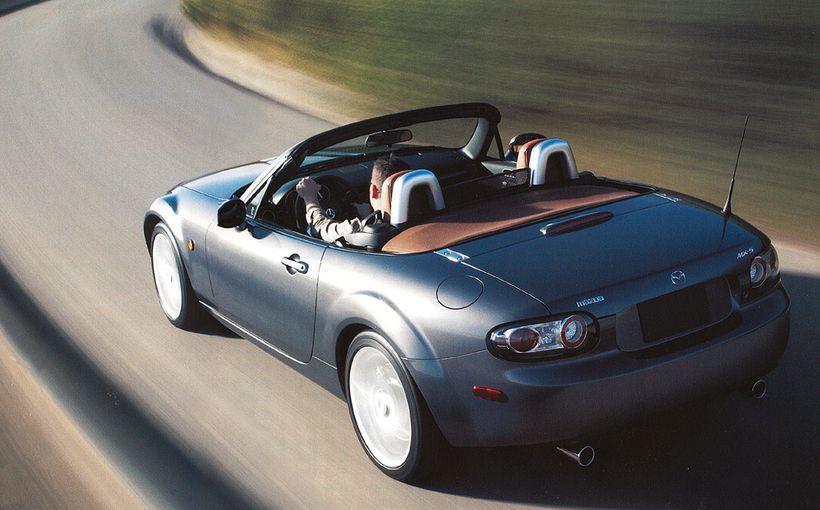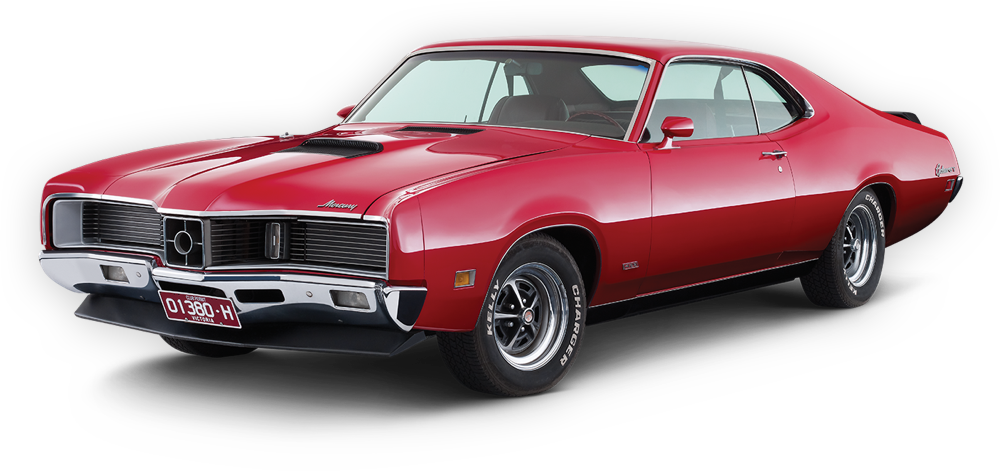Mazda MX-5: Four Generations of Genius Small Sports Car

Despite the wonderful fact of its having existed through four model generations with the fifth imminent, the Mazda MX-5 Miata’s status as a Super Model is almost entirely due to the brilliance of the original version (NA) which made its debut in February 1989 at the Chicago Auto Show and was released in Australia eight months later.
From 1989 until the debut of the fourth generation (ND) in 2015, maximum power climbed from 86kW to 135kW. Options, safety equipment and special variants multiplied over the years but the simple joyous character of the car and the purity of the concept – embodying the Japanese term of Jinba Itta, oneness of horse and rider – survives.
The very existence of the MX-5 is generally credited to the vision of then Motor Trend journalist Bob Hall who suggested it would be a good idea for Mazda to reinvent the classic two-seater British sports car, imbuing it with Japanese build quality and reliability. Hall was subsequently invited to join the Mazda product planning team under Rod Bymaster (who, incidentally, after leafing through old dictionaries came up with the name ‘Miata’, an arcane word essentially meaning reward).

Image: wheelsage.org
The benchmark car in product planning was the Lotus Elan, although arguably the original MX-5 was closer to a reimagined MGB (because it lacked the Elan’s high performance relative to mainstream cars of the time).
‘Cara Mia, Miata’, I called my first story on the MX-5, which began about as enthusiastically as I had ever begun an account of a new motor car:
Cara mia, Miata! My darling, this little sports car, this unutterably perfect, pure piece of automotive design. What we’ve fallen in love with is, in a sense, a return of innocence. Remove the roof and feel the earth move. Enjoy a high-revving, willing engine that needs just 1.6 litres and no turbocharger to stir the adrenalin. Feel the gearshift that is short in throw beyond belief and as sweet in action as anyone has ever made.
A sports car, someone once said, has to feel fast; it doesn’t have to run a sub-15 second standing 400 metres or post a V-Max of 250km/h. Sports cars are about sensations.
Don’t look here for every latest mod con. You won’t even find power steering. The Miata invites you to rediscover the basic joys of sports car motoring without having to risk getting arrested in the process.
Don’t expect yet another road test of the Mazda MX-5. By now this 1.6-litre fuel-injected but naturally aspirated twin cam two-seater rear-wheel-drive roadster has established its credentials: it steers, stops, corners and brakes beautifully; it rides surprisingly well for so compact a device; the body is far more rigid than one would expect; the performance is lively but an extra couple of hundred cm3 wouldn’t go astray; it looks wonderful.

Revisiting this rush of lyricism in the first edition of the new magazine of which I was editor (The Best Car Magazine) way back in 1990, hindsight allows me to cavil with one observation, namely than an extra 200cc of engine capacity would be a good thing. Speaking personally, I found the 1.8-litre version which arrived in 1994 a real anti-climax. Sure, it had more torque, but it had lost that sweet note and was less happy at high rpm.
(This judgement was hardly original, and it didn’t take long before further engine revisions returned all the joyous smoothness of the original 1.6.)
Of course, I had to buy an MX-5 for myself, soon after testing it. I chose an ex-press car in red with optional air-conditioning and hardtop. Initially, there was indeed just the one choice of colour: red or white. Blue soon followed. All three liveries were solid rather than metallic, the interior always black.
My friend and colleague Tony Davis did even better than I but his choice was not on offer in 1990. This 1991 beauty was the first of what would be myriad special editions, drop dead gorgeous in British Racing Green with tan (Camel) leather trim and wooden gearknob among other enhancements. You could even specify a matching hardtop at extra cost.
To understand the immense appeal of the original MX-5 Miata, you need to get the 1990 context. Rear-wheel-drive was for Commodores, Falcons, BMWs, Mercedes, Jaguars and the brilliant new Lexus LS400 and precious few others. Sure, there was the delightful mid-engined Toyota MR-2, but successful as it was, the MR-2 did not excite the popular imagination in the way of the MX-5:
I cannot recall any new car on the realistic side of $100,000 that has lured the general population like this one. Name another even approximately affordable machine of recent times that has enjoyed such crowd-pulling appeal. In a sense, the Miata is to the Ford Capri, Toyota MR-2, even the sadly defunct (nee Fiat) Bertone X1/9 what Marilyn Monroe was to Jane Russell, Doris Day or any of the other Hollywood beauties of her era. The Mazda MX-5 Miata is surely today’s automotive equivalent of Marilyn Monroe, her white skirt billowing in The Seven Year Itch. And just maybe some of the designers from other car companies feel as disgruntled as Monroe’s husband Joe DiMaggio, lost in the throstling throng watching her performance.
There’s an elusive desirability here that transcends the data sheets. And just as it was possible to make a case that Marilyn Monroe was not the most beautiful woman in the movies, so, too, it can be asserted other sporting type cars work better than, or certainly as well as, the MX-5.
The buyers don’t care.

Image: wheelsage.org
I guess the bravest decision was choosing ‘FR’ as the configuration for what was known internally as P729 LWS (Lightweight Sports Car). An in-house design competition between Mazda’s Tokyo studio and its American one offered a choice between ‘FF’ (front-wheel-drive), ‘MR’ (mid-engine, rear-wheel-drive) and ‘FR’ (front engine, rear-wheel-drive). The Japanese team went for the first, conceiving a Honda CR/X-rival, but the Americans said: ‘For Mazda to produce the P729 with an FR layout shows that we are producing an affordable sports car, not an economy car…FR is more fun…Thirdly, the American public has had over 40 years of sports car exposure. Some 44 manufacturers have sold two-seat convertible sports cars in the USA. The P729 has a future as the answer to the loss of these sports cars. The market is here because MG, Triumph, Austin-Healey, etc are no longer selling sports cars. Since this is the market, we must create a car that fits it…’
In summary, the Mazda MX-5 has remained true to this concept through all its generations, while more power and extra equipment have kept coming throughout. There have been numerous special editions.

Image: wheelsage.org
The original NA was replaced in 1998 by the restyled but similar NB, which sadly lost the trademark retractable headlights due to pedestrian safety considerations. Its new body was perhaps more curvaceous but the character was similar. The brakes were bigger, and a six-speed manual transmission was introduced. A revised edition in 2001 brought an improved interior and variable valve timing for the 1.8-litre engine which now made 106kW. Mazda Australia introduced a 150kW SP turbocharged variant in 2002 and Japan soon followed with a milder version (133kW), known as the MX-5 Superspeed.

A highlight was the new retractable hardtop option.
Image: wheelsage.org
The significantly bigger and weightier 2005-2015 NC brought the neat option of the power retractable hardtop (PRHT). While still relatively light and compact, this model tipped the scales at 1110kg or 1153 with PRHT. This was a fair departure from the original’s 940kg and already Mazda’s product planners were preparing to turn back the clock in terms of physical size and weight.

The ND is a superb design and many regard it as the most elegant of the four generations to date. Debuting in 2015, the model boasted a standard six-speed manual gearbox with the option of six-speed automatic. Remarkably, it was even shorter (by 60mm) than the 1989 car. Its undoubted highlight was the reimagined power hardtop, which was the world’s first retractable fastback (RF). Car and Driver described the raising of this elaborate structure as a ‘dance’: This dance requires the pair of buttresses stretching the rear quarter panels to lift up and back, a mesmerising sequence.

Image: wheelsage.org
To celebrate its thirtieth anniversary, Mazda produced 3000 special examples in Racing Orange, revealing this delight at the 2019 Chicago motor show where the original made its debut.
By any measure, to produce a safe 2024 sports car with all the necessary safety engineering and have it weigh in at just 1070kg (or 1115 in RF guise) is a phenomenal achievement.

Image: wheelsage.org
We eagerly await the fifth-generation MX-5 and will bring news of it in the comments accompanying this feature.




